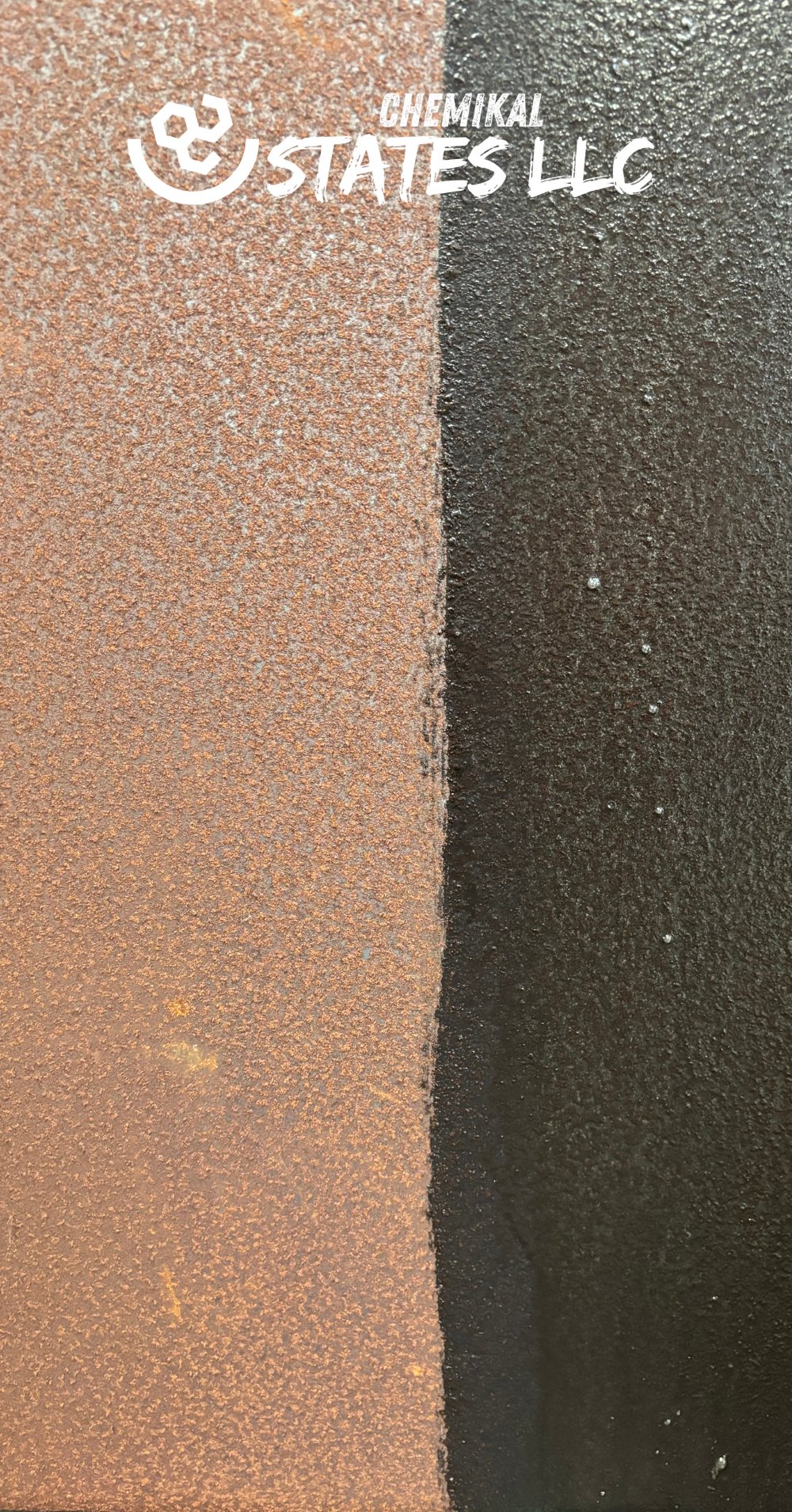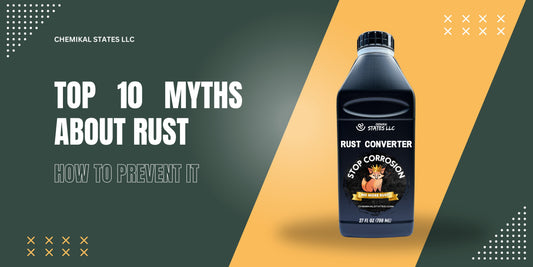
Rust Remover vs. Rust Converter: What's the Difference?
Share
When it comes to combating rust on metal surfaces, two main products often come to mind: Rust Removers and Rust Converters. While both are designed to tackle rust, they function quite differently and are suited for different stages of the rust treatment process. Understanding the differences between these two products is crucial for selecting the right one for your specific needs.
What is a Rust Remover?
A Rust Remover, as the name suggests, is a chemical solution that actively removes rust from metal surfaces. It works by breaking down the iron oxide (rust) and stripping it away, often leaving behind a clean, bare metal surface. Rust Removers typically contain acidic compounds, such as phosphoric acid or oxalic acid, which dissolve rust on contact.
How Does Rust Remover Work?
When you apply a Rust Remover to a metal surface, the acid in the solution reacts with the rust, dissolving it into a liquid form that can be wiped or rinsed away. This process requires physical effort, such as scrubbing or brushing, to fully remove the rust. After the rust is removed, the metal is exposed and ready for further treatment, such as priming and painting.
Advantages of Rust Removers
- Thorough Removal: Rust Removers are highly effective at completely removing rust from the surface, leaving behind bare metal.
- Preparation for Repair: Since Rust Removers expose the bare metal, they are ideal for surfaces that require welding, filling, or other forms of metal repair.
- Versatility: Rust Removers can be used on a variety of metal surfaces, including tools, auto parts, and small objects.
Disadvantages of Rust Removers
- Labor-Intensive: Using a Rust Remover often requires significant physical effort, including scrubbing or brushing, to fully remove the rust.
- Vulnerable to Future Rust: Once the rust is removed, the metal is exposed to the elements and can quickly start to rust again if not properly protected with a primer or paint.
- Chemical Handling: Rust Removers contain strong acids that can be hazardous to handle and may require protective equipment, such as gloves and goggles.
What is a Rust Converter?
A Rust Converter, on the other hand, is a chemical solution that transforms rust into a stable, paintable surface. Rather than removing the rust, a Rust Converter chemically reacts with it to create a protective layer that prevents further corrosion. This process is less labor-intensive than using a Rust Remover and does not require you to scrub or sand down the rusted area before application.
How Does Rust Converter Work?
Rust Converters contain tannic acid and an organic polymer. The tannic acid reacts with the iron oxide to form iron tannate, a dark, stable compound that neutralizes the rust. The organic polymer then forms a protective barrier over the treated area, creating a surface that can be directly painted or coated. This dual-action process stops rust from spreading and helps protect the metal from future rusting.
Advantages of Rust Converters
- Ease of Use: Rust Converters are easy to apply and require minimal preparation. Simply clean off loose rust and apply the converter directly to the rusted area.
- Time-Saving: There’s no need for extensive scrubbing or sanding, which significantly reduces the time and effort needed to treat rust.
- Long-Term Protection: The protective layer formed by the Rust Converter prevents future rusting and prepares the surface for painting, extending the life of the metal object.
- Safe Handling: Many Rust Converters are water-based and contain fewer hazardous chemicals, making them safer and easier to handle.
Disadvantages of Rust Converters
- Not a Cleaner: Rust Converters do not remove rust; they only neutralize it. This means that the treated surface may retain a dark, rough texture, which may not be desirable for certain applications.
- Surface Finish: The finish provided by a Rust Converter is not as smooth as bare metal, which may require additional priming and sanding before painting, depending on the desired final appearance.
- Limited Use on Thick Rust: While Rust Converters are effective on light to moderate rust, heavily rusted areas may require multiple applications or a combination of rust removal and conversion.
Rust Remover vs. Rust Converter: Which Should You Choose?
The choice between a Rust Remover and a Rust Converter largely depends on the condition of the rusted surface and your specific project needs.
-
Use a Rust Remover if:
- You need to completely remove rust to expose bare metal for repairs, welding, or other treatments.
- You are working on small objects, tools, or parts where thorough rust removal is essential.
- You are dealing with thick, heavy rust that requires more aggressive treatment.
-
Use a Rust Converter if:
- You want to stop rust and prevent it from spreading with minimal effort.
- You plan to paint over the treated area and need a surface that is prepped for priming and painting.
- You are dealing with large surfaces, such as fences, gates, or vehicles, where rust removal would be too labor-intensive.
Can You Use Both?
In some cases, you might find that using both products is the best approach. For example, you could start with a Rust Remover to eliminate heavy rust, then follow up with a Rust Converter to treat any remaining spots and prepare the surface for painting. This combined approach ensures that you address rust comprehensively, providing long-term protection for your metal surfaces.
Conclusion: Choosing the Right Tool for the Job
Rust is a common problem that can significantly reduce the lifespan of metal objects, but with the right tools, it’s a problem that can be effectively managed. Whether you opt for a Rust Remover or a Rust Converter, understanding the strengths and limitations of each product is key to achieving the best results.
For those looking for a quick and effective way to stop rust and prepare surfaces for painting, a high-quality Rust Converter, like the one available at Chemikalstates.com, is an excellent choice. It offers ease of use, long-term protection, and is especially suited for larger projects where labor-intensive rust removal is impractical.
However, if your project requires the complete removal of rust or involves metal repair, a Rust Remover might be the better option. Both products have their place in metal restoration and, when used correctly, can help you maintain and protect your valuable metal items for years to come.
Visit Chemikalstates.com to explore our range of rust treatment solutions and find the perfect product for your needs.










